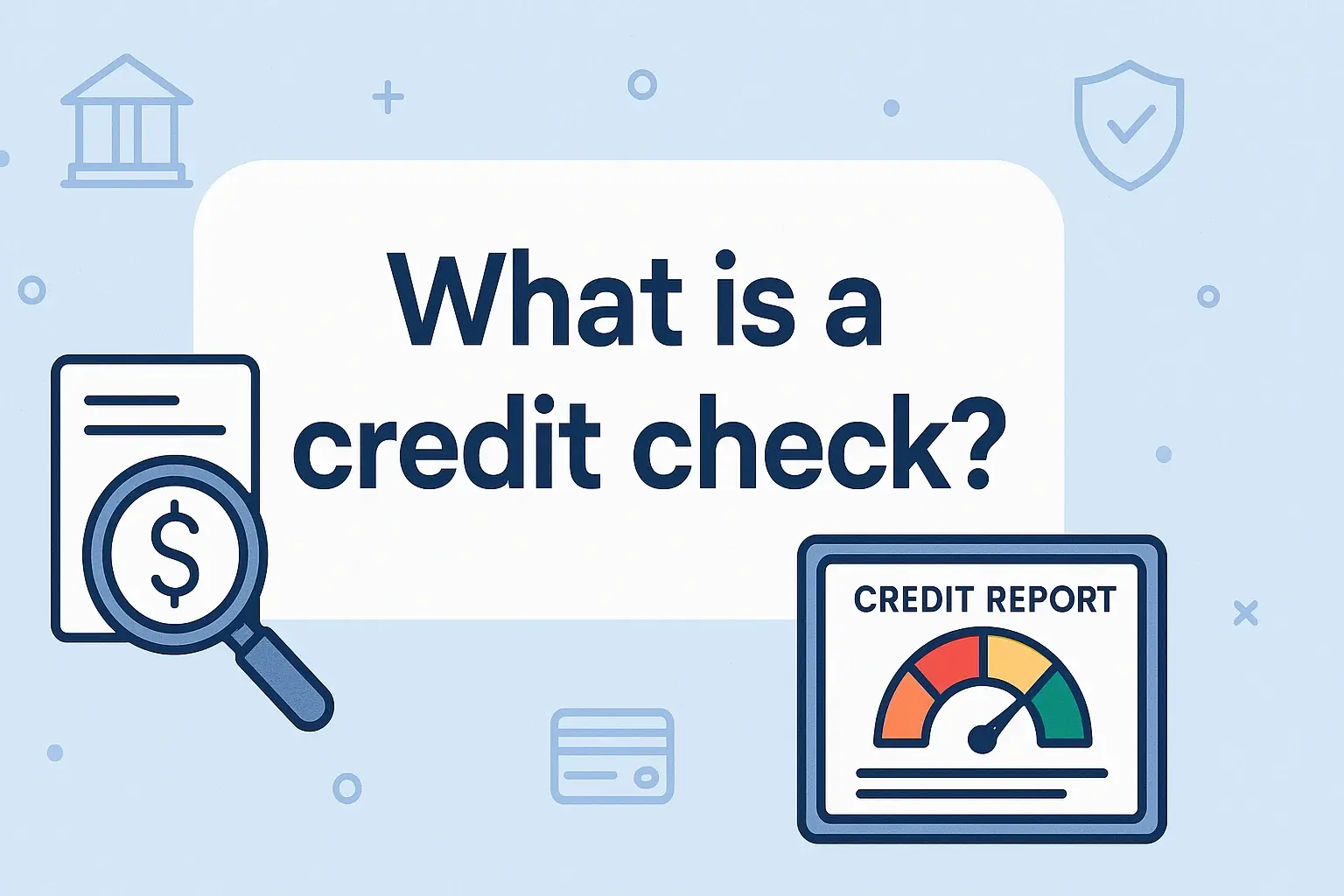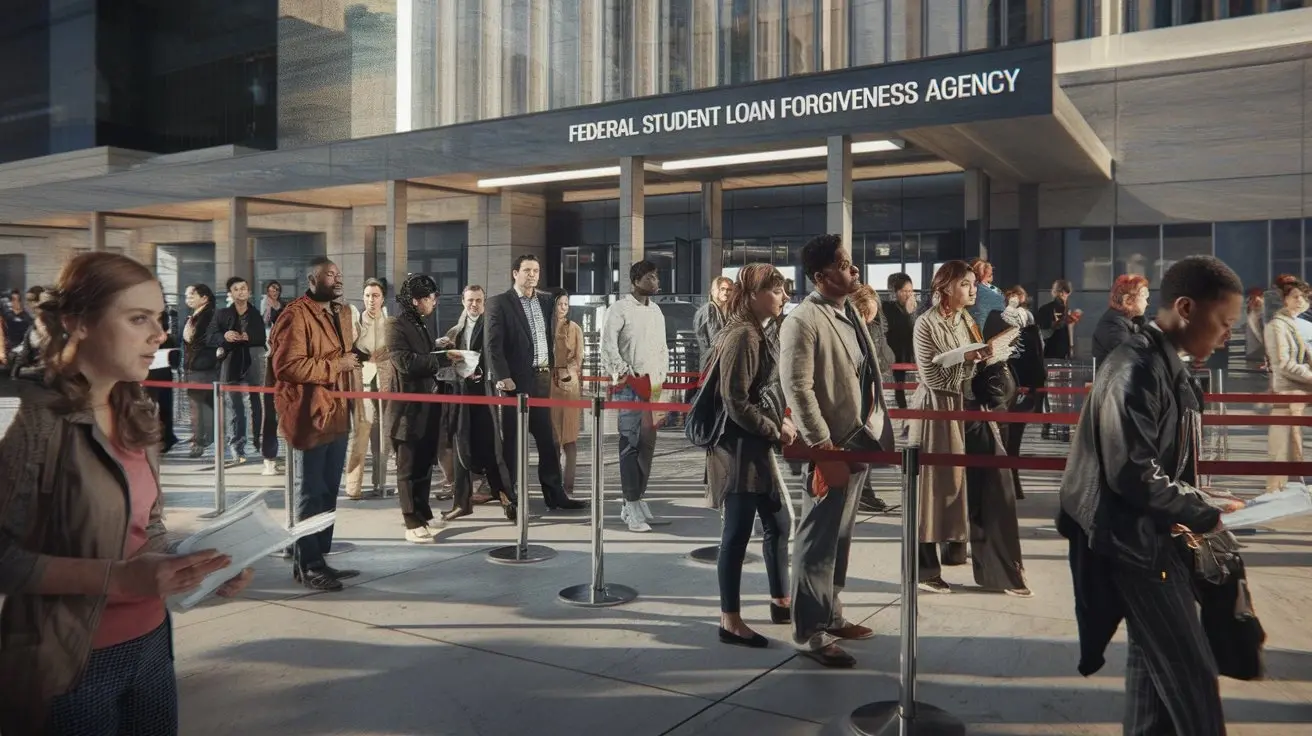-
Posted on: 26 Dec 2024

-
Unlock the power of goodwill letters to improve your credit score. This guide explains why these simple yet effective tools can remove negative marks and how to craft compelling letters that get results, offering a clear path to a healthier financial future.
What Are Goodwill Letters?
A goodwill letter, also known as a "letter of inquiry" or "request for goodwill adjustment," is a formal written request sent to a creditor or lender asking them to remove a negative mark from your credit report. This negative mark is typically a late payment, a missed payment, or a similar delinquency that has been reported to the major credit bureaus (Equifax, Experian, and TransUnion). The core principle behind a goodwill letter is to appeal to the creditor's sense of understanding and fairness, highlighting any extenuating circumstances that led to the payment issue and demonstrating your commitment to responsible credit management moving forward. Unlike a dispute, which challenges the accuracy of information on your credit report, a goodwill letter acknowledges the delinquency but asks for an exception based on your overall positive payment history and a sincere commitment to future punctuality. In 2025, the landscape of credit reporting continues to evolve, making proactive steps like these more crucial than ever for maintaining a strong financial profile.
Why Use Goodwill Letters for Credit Repair?
The impact of negative marks on a credit report cannot be overstated. A single late payment can significantly lower your credit score, making it harder to qualify for loans, mortgages, apartments, and even some jobs. In 2025, with credit scores playing an even more pivotal role in financial decision-making, the ability to mitigate the damage from past errors is invaluable. Goodwill letters offer a powerful, often overlooked, avenue for credit repair because they:
- Address Minor or Isolated Incidents: If you have a generally excellent credit history with only one or two isolated late payments due to unforeseen circumstances, a goodwill letter is a perfect tool. Creditors are often more willing to make an exception for a long-standing, otherwise reliable customer.
- Humanize Your Credit Report: Credit reports are often viewed as purely statistical data. A well-written goodwill letter adds a human element, explaining your situation and demonstrating your character. This can be more persuasive than a formal dispute process, especially when the delinquency is not an error.
- Cost-Effective: Unlike credit repair services that can charge substantial fees, writing and sending a goodwill letter is essentially free, aside from postage. It's a DIY solution that can yield significant results.
- Proactive Approach: Instead of waiting for negative marks to age off your report (which can take up to seven years), a goodwill letter allows you to actively seek their removal sooner.
- Demonstrates Responsibility: By acknowledging the issue and taking the initiative to write a letter, you show the creditor that you are taking responsibility for your financial actions and are committed to improving your creditworthiness.
- Potential for Significant Score Improvement: Removing even one negative mark, especially a recent one, can lead to a noticeable increase in your credit score. For instance, data from 2025 indicates that removing a 30-day late payment can boost a score by as much as 30-50 points, depending on the individual's credit profile.
In essence, goodwill letters are a strategic move to leverage your positive credit history and demonstrate your commitment to financial responsibility, potentially reversing the negative impact of past slip-ups before they cause long-term damage.
When Are Goodwill Letters Most Effective?
While goodwill letters can be attempted at any time, their effectiveness is significantly amplified when certain conditions are met. Understanding these nuances can dramatically increase your chances of success. In 2025, creditors and lenders often have specific criteria they consider when evaluating such requests. Here are the prime scenarios where goodwill letters tend to be most impactful:
1. Isolated Late Payments
The most common and successful use of a goodwill letter is for a single, isolated instance of a late payment. If your credit report is otherwise pristine, showing a history of on-time payments, a creditor is far more likely to grant your request. They value your long-term relationship and may see this as a minor, understandable lapse.
2. Recent Delinquencies
While it might seem counterintuitive, sometimes requesting goodwill for a recent late payment can be effective. If the delinquency just occurred and you've already rectified the situation (paid the balance, caught up on payments), you can proactively address it. However, it's often more effective to wait a few months after the issue is resolved and your account is back in good standing, demonstrating sustained positive behavior.
3. Circumstances Beyond Your Control
Creditors are more receptive to requests when the late payment was due to extenuating circumstances. This could include:
- Serious illness or medical emergency
- Job loss or significant reduction in income
- Natural disasters
- Death of a family member
- Technical issues with payment processing (though this is harder to prove)
Be prepared to briefly and honestly explain these circumstances in your letter.
4. Long-Standing Customer Relationship
If you've been a loyal customer with a particular bank, credit card company, or service provider for many years, and have a history of responsible payments, leverage that relationship. Mentioning your tenure and loyalty can sway the creditor's decision.
5. Small Amount of Delinquency
A payment that was only a few days late, or a balance that was slightly past due, might be viewed more leniently than a payment that was 60 or 90 days late. The severity of the delinquency matters.
6. After Resolving the Issue
Crucially, always ensure the underlying issue that caused the late payment has been resolved. Your account should be current and in good standing before you send the letter. This shows you've taken corrective action.
7. When Other Dispute Methods Fail
If you've attempted to dispute a negative mark and it was unsuccessful because it was an accurate reflection of your account activity, a goodwill letter is the next logical step. It shifts the focus from accuracy to a request for leniency.
Important Note for 2025: While goodwill requests are not guaranteed, focusing on these scenarios significantly improves your odds. Creditors are looking for evidence that the lapse was an anomaly, not a pattern, and that you are a valuable customer worth retaining.
How to Write a Winning Goodwill Letter: A Step-by-Step Guide
Crafting an effective goodwill letter requires a blend of professionalism, sincerity, and strategic communication. It's not just about asking; it's about presenting a compelling case for leniency. Follow these steps to maximize your chances of success in 2025:
Step 1: Gather Your Information
Before you start writing, collect all necessary details:
- Your Account Information: Account number, name as it appears on the account.
- The Specific Negative Mark: Date of the late payment, the amount (if relevant), and the creditor reporting it.
- Your Credit Report: Obtain a copy of your credit report from AnnualCreditReport.com to identify the exact entry you want removed.
- Supporting Documentation (Optional but Recommended): If you are citing extenuating circumstances (e.g., medical bills, layoff notice), have documentation ready, though you may not need to include it in the initial letter.
Step 2: Identify the Correct Recipient
You need to send the letter to the correct department within the creditor's organization. Often, this is the customer service department or a specific goodwill/resolution department. Check the creditor's website or call their customer service line to find the appropriate mailing address. Sending it to the wrong place can cause delays or prevent it from being seen by the right people.
Step 3: Choose Your Format
A formal letter is the standard. You can type it or handwrite it neatly. Ensure it's professional in appearance.
Step 4: Structure Your Letter
A standard business letter format is best:
- Your Contact Information: Full name, address, phone number, email address.
- Date: The date you are writing the letter.
- Creditor's Contact Information: Company name, department, address.
- Salutation: Address it to a specific person if possible (e.g., "Dear Mr. Smith," or "Dear Customer Service Manager,"). If not, "To Whom It May Concern" is acceptable but less personal.
- Subject Line: Clearly state the purpose, e.g., "Request for Goodwill Adjustment - Account # [Your Account Number]".
- Body Paragraphs: This is where you make your case.
- Closing: Professional closing like "Sincerely," or "Respectfully,".
- Your Signature: Your typed name below your signature.
Step 5: Draft the Content (See Next Sections for Details)
Focus on clarity, honesty, and a respectful tone. Acknowledge the error, explain briefly, and state your request.
Step 6: Proofread Meticulously
Typos and grammatical errors can undermine your professionalism. Read it aloud, use spell-check, and consider having someone else review it.
Step 7: Send Your Letter
Use certified mail with a return receipt requested. This provides proof of delivery and when it was received. Keep a copy of the letter and the mailing receipt for your records.
Step 8: Follow Up (If Necessary)
If you don't hear back within 30-45 days, you can send a polite follow-up letter or make a phone call to inquire about the status of your request. Reference your original letter and the date it was sent.
By following these steps, you create a structured, professional, and persuasive request that maximizes your chances of achieving a positive outcome in 2025.
Key Components of an Effective Goodwill Letter
A successful goodwill letter is more than just a plea; it's a carefully constructed message designed to resonate with the creditor. In 2025, as businesses increasingly rely on data, the human element and clear communication are paramount. Here are the essential components that should be included in your letter:
1. Clear Identification
Start by clearly identifying yourself and the account in question. This allows the creditor to quickly locate your records.
- Your full name.
- Your account number with the creditor.
- The specific service or product the account is for (e.g., credit card, loan, utility bill).
2. Statement of Purpose
Be direct about why you are writing. State clearly that you are requesting a goodwill adjustment or removal of a negative mark from your credit report.
- Example: "I am writing to respectfully request a goodwill adjustment to remove a late payment entry from my credit report for account number [Your Account Number]."
3. Acknowledgment of the Delinquency
It's crucial to acknowledge that the negative mark is accurate. This isn't a dispute; it's a request for leniency. Owning the mistake builds credibility.
- Example: "I understand that my account shows a late payment on [Date of Late Payment]."
4. Brief Explanation of Circumstances (Optional but Recommended)
This is where you provide context. Keep it concise, honest, and avoid making excuses. Focus on extenuating circumstances that were beyond your control.
- Be Specific but Brief: Instead of "I had some problems," say "I experienced a severe medical emergency that required hospitalization and led to a temporary inability to manage my finances."
- Focus on Impact: Explain how the circumstance directly affected your ability to make the payment on time.
- Avoid Over-Sharing: Stick to the relevant facts. You don't need to provide every detail of a personal crisis.
- Example: "During the period of [Month/Year], I experienced an unexpected job loss which significantly impacted my income, making it difficult to meet all my financial obligations on time. While I have since secured new employment and my finances are stable, this period resulted in a late payment on my account."
5. Highlight Your Positive Credit History
This is a critical persuasive element. Remind the creditor of your value as a customer and your general reliability.
- Mention your long-standing relationship with the company.
- Emphasize your history of on-time payments before and after the incident.
- Quantify your loyalty if possible (e.g., "I have been a loyal customer for over 10 years").
- Example: "As you can see from my account history, this late payment is an isolated incident. I have maintained a consistent record of on-time payments for the past [Number] years and value my relationship with [Creditor Name]."
6. State Your Desired Outcome Clearly
Reiterate what you want the creditor to do. Be specific about removing the negative mark from your credit report.
- Example: "I kindly request that you consider removing this late payment notation from my credit report to reflect my otherwise positive payment history."
7. Express Commitment to Future Responsibility
Assure the creditor that this was a one-time occurrence and that you are committed to maintaining a perfect payment record moving forward.
- Example: "I am fully committed to ensuring all future payments are made on time and am taking steps to better manage my finances to prevent similar issues from occurring again."
8. Professional Closing
End with a polite and professional closing, thanking them for their time and consideration.
- Example: "Thank you for your time and consideration of my request. I look forward to your favorable response."
By including these components, your goodwill letter becomes a well-rounded, persuasive document that appeals to both logic and a sense of fairness, significantly increasing your chances of a positive outcome in 2025.
Crafting Your Narrative: Honesty and Responsibility
The heart of a successful goodwill letter lies in the narrative you present. It's not just about stating facts; it's about weaving a story that elicits understanding and encourages action. In 2025, creditors are sophisticated enough to detect insincerity, so authenticity is key. Here’s how to craft a narrative that emphasizes honesty and responsibility:
Embrace Honesty, Avoid Excuses
The line between explaining a situation and making excuses can be thin. A genuine explanation focuses on the circumstances that *led* to the missed payment, while an excuse often deflects responsibility. For instance, saying "I was too busy" sounds like an excuse. Saying "I experienced a family emergency that required my full attention, leading to a lapse in my usual financial management" is an explanation.
Focus on the "Why," Not Just the "What"
Don't just state that you missed a payment. Briefly explain the underlying reason. Was it a system failure on your end? A misunderstanding of terms? An unexpected life event? The "why" provides the context that can evoke empathy.
Demonstrate Self-Awareness
Show that you understand the importance of timely payments and the impact of delinquencies on your credit. This demonstrates maturity and a commitment to financial health.
- Example: "I understand the critical importance of timely payments in maintaining a healthy credit score, and I deeply regret that my actions on this occasion did not reflect that understanding."
Highlight Proactive Steps Taken
If you've already taken steps to rectify the situation or prevent future occurrences, mention them. This could include:
- Setting up automatic payments.
- Creating a new budget.
- Seeking financial counseling.
- Ensuring your contact information is up-to-date with the creditor.
These actions signal that you are not just asking for a favor but are actively working to improve your financial habits.
Keep it Concise and Professional
While you want to be descriptive, avoid lengthy, rambling narratives. Creditors are busy. Get to the point quickly and respectfully. A few well-chosen sentences are more effective than pages of text.
Tailor Your Narrative to the Creditor
Consider the type of creditor. A utility company might be more sympathetic to a temporary hardship than a high-end credit card issuer. Adjust your tone and the details you emphasize accordingly.
The Power of a Single, Isolated Incident
If your situation truly is an isolated incident, emphasize this. A history of perfect payments before and after the lapse is your strongest asset. This narrative positions the delinquency as an anomaly, not a pattern.
Example Narrative Snippet:
"I have been a loyal customer of [Creditor Name] for over seven years, consistently making my payments on time. In [Month, Year], I experienced a significant personal crisis when my primary caregiver fell seriously ill, requiring my immediate and constant attention. During this incredibly stressful period, my usual diligent financial management unfortunately slipped, resulting in a missed payment on my account. I have since made arrangements to ensure all my accounts are managed meticulously, and I have set up automatic payments to prevent any future oversight. I am writing to humbly request that you consider removing this single late payment from my credit report, as it does not reflect my usual commitment to financial responsibility."
By focusing on honesty, demonstrating responsibility, and crafting a clear, concise narrative, you present yourself as a valuable customer who made a mistake but is committed to financial integrity. This approach is highly persuasive in the current financial climate of 2025.
Sending Your Goodwill Letter: Best Practices
The way you send your goodwill letter can be as important as its content. Following best practices ensures your request is received, documented, and processed efficiently. In 2025, leveraging traceable methods is crucial for accountability.
1. Choose the Right Method of Sending
- Certified Mail with Return Receipt Requested: This is the gold standard. It provides undeniable proof that the creditor received your letter and the date of receipt. This is invaluable if you need to follow up or escalate the issue.
- First-Class Mail (with Tracking): If certified mail is not feasible, sending via first-class mail with a tracking number offers some level of traceability.
- Email (Use with Caution): Some creditors accept email requests. If you choose this route, ensure you get a confirmation of receipt. However, a formal letter sent via mail often carries more weight and is harder to dismiss. Always check the creditor's preferred method.
2. Address the Letter Correctly
Sending the letter to the right department is crucial. Look for a specific "Customer Service," "Billing," or "Credit Department" address. If unsure, call the company's main customer service line and ask for the correct address for goodwill requests or billing inquiries.
3. Keep Copies of Everything
- Your Letter: Make a photocopy or scan of the letter before you send it.
- Mailing Receipt: Keep the certified mail receipt or tracking information.
These documents are your proof of action and can be vital if disputes arise later.
4. Timing is Key
- Send After Resolution: Ensure the account is current and in good standing before sending.
- Allow Time for Processing: Give the creditor at least 30 days to respond before initiating a follow-up.
5. What to Expect in Terms of Delivery Time
Standard mail delivery can take 3-7 business days. Certified mail often arrives within this timeframe as well. The creditor's internal processing time will add to this.
6. Document Your Communication
If you make phone calls to follow up, note the date, time, the name of the representative you spoke with, and a summary of the conversation. This creates a comprehensive record of your efforts.
7. Be Patient but Persistent
Credit repair takes time. While a goodwill letter can be a quick win, it's not always immediate. Be patient, but don't hesitate to follow up politely if you don't receive a response within the expected timeframe.
8. Consider Sending to All Reporting Agencies (Indirectly)
While the goodwill letter is sent directly to the creditor, if the creditor agrees to remove the mark, they are responsible for reporting that change to the credit bureaus. You can follow up with the bureaus after the creditor confirms the change.
By adhering to these best practices, you ensure your goodwill letter is handled professionally and efficiently, maximizing its potential impact on your credit report in 2025.
What Happens After You Send a Goodwill Letter?
The period following the submission of your goodwill letter is one of anticipation and requires a strategic approach. Understanding the potential outcomes and your next steps will help you navigate this phase effectively. In 2025, credit reporting processes are more streamlined, but responses can still vary.
Possible Outcomes
- Request Granted: The creditor reviews your letter and agrees to remove the negative mark from your credit report. This is the ideal outcome.
- Request Denied: The creditor declines your request. They may provide a reason, or they may simply not respond.
- Request Ignored: You receive no response from the creditor within a reasonable timeframe (e.g., 45-60 days).
- Partial Grant: In rare cases, they might offer a compromise, though this is uncommon for goodwill requests.
Timeline for Response
Creditors typically have 30 to 45 days to respond to formal requests. This timeframe allows them to investigate your account, review your letter, and make a decision. If you sent your letter via certified mail, your return receipt will indicate when they received it, establishing the start of this period.
What to Do If Your Request is Granted
- Confirm in Writing: Ask for written confirmation from the creditor that they have removed the negative mark and have updated your credit report.
- Check Your Credit Report: After receiving confirmation, monitor your credit reports from Equifax, Experian, and TransUnion. It can take up to 30 days for the changes to reflect. You can get free copies at AnnualCreditReport.com.
- Verify Accuracy: Ensure the negative mark is indeed gone and that no new errors have been introduced.
What to Do If Your Request is Denied
- Review the Reason (If Provided): If they give a reason, understand it. Was it due to your overall credit history, the severity of the delinquency, or something else?
- Consider a Second Attempt (Rarely Recommended): Unless new circumstances have arisen, a second goodwill letter to the same creditor for the same issue is unlikely to succeed.
- Focus on Other Strategies: Shift your focus to other credit repair methods, such as disputing inaccuracies or building positive credit history.
- Wait for the Mark to Age Off: If the mark is accurate and the creditor won't budge, the only recourse is to wait for it to naturally fall off your report after seven to ten years, depending on the type of delinquency.
What to Do If Your Request is Ignored
- Send a Polite Follow-Up Letter: After 45-60 days, send a brief, polite follow-up letter referencing your original request and the certified mail receipt.
- Consider a Phone Call: You can also try calling the creditor's customer service department to inquire about the status of your request. Document the call.
- Escalate (If Necessary): If there's still no response, you might consider filing a complaint with regulatory bodies like the Consumer Financial Protection Bureau (CFPB), though this is usually a last resort for ignored goodwill requests.
The Role of the Credit Bureaus
It's important to remember that goodwill letters are sent to the *creditor* (the company you owe money to), not directly to the credit bureaus. The creditor is the one who has the authority to request changes to the information they reported. The credit bureaus are merely the record-keepers.
Navigating the post-letter phase requires patience and diligence. By understanding the potential outcomes and having a plan for each, you can effectively manage your credit repair journey in 2025.
Alternatives and Complementary Strategies
While goodwill letters are a powerful tool, they are not the only strategy for credit repair. For 2025, a multi-pronged approach often yields the best results. Here are alternatives and complementary strategies that can work alongside or instead of goodwill letters:
1. Credit Dispute Letters
When to Use: If you find any inaccuracies on your credit report (e.g., accounts that don't belong to you, incorrect payment statuses, wrong balances, duplicate entries). This is different from a goodwill request; it challenges the accuracy of the information.
How it Works: You send a formal dispute letter to the credit bureaus (Equifax, Experian, TransUnion) outlining the inaccuracies. They have 30 days to investigate. If the information cannot be verified, it must be removed.
2. Debt Management Plans (DMPs)
When to Use: If you are struggling with overwhelming debt and making consistent late payments across multiple accounts.
How it Works: A non-profit credit counseling agency works with your creditors to consolidate your debts into a single monthly payment. They may negotiate lower interest rates or waived fees. DMPs are typically noted on your credit report, which can be a neutral or slightly negative mark, but they help you get back on track and avoid further delinquencies.
3. Debt Settlement
When to Use: As a last resort when you cannot afford to pay your debts in full, and you're facing collections or lawsuits.
How it Works: You negotiate with creditors (often through a debt settlement company) to pay a lump sum that is less than the full amount owed. This typically results in a significant negative mark on your credit report (often labeled as "settled for less than full amount") and can have tax implications. It's generally advisable to explore other options first.
4. Credit-Builder Loans and Secured Credit Cards
When to Use: To establish or rebuild a positive credit history, especially if you have limited credit or a poor credit score.
How it Works:
- Credit-Builder Loans: You make payments on a loan that is held in a savings account. Once the loan is repaid, you receive the money. The timely payments are reported to credit bureaus.
- Secured Credit Cards: You provide a cash deposit as collateral, which becomes your credit limit. Responsible use and on-time payments are reported, helping to build your credit history.
5. Become an Authorized User
When to Use: If you have a trusted friend or family member with excellent credit who is willing to add you as an authorized user on their credit card.
How it Works: Their positive payment history on that account can be reflected on your credit report. However, if they miss payments or carry high balances, it can negatively impact your credit. Ensure the primary cardholder has a strong credit history and uses the card responsibly.
6. Strategic Use of Credit
When to Use: To actively improve your credit utilization ratio and payment history.
How it Works:
- Keep Credit Utilization Low: Aim to use less than 30% of your available credit limit on credit cards. Lower is better (under 10% is ideal).
- Pay Bills on Time: Payment history is the most significant factor in credit scores. Always pay at least the minimum amount due by the due date.
- Avoid Opening Too Many New Accounts Quickly: This can lead to multiple hard inquiries, which can temporarily lower your score.
7. Credit Repair Services (Use with Caution)
When to Use: If you have complex credit issues and lack the time or knowledge to address them yourself.
How it Works: Reputable credit repair companies can help you identify inaccuracies, send dispute letters, and negotiate with creditors. However, be wary of companies that guarantee results or charge upfront fees for services that aren't yet rendered. Research them thoroughly and understand their fees and processes.
Integrating Goodwill Letters: Goodwill letters can be used in conjunction with these strategies. For example, after sending a goodwill letter for a late payment, you might simultaneously open a secured credit card to build positive history and monitor your credit report for any other inaccuracies that warrant a dispute letter. A balanced approach is key to effective credit repair in 2025.
Common Mistakes to Avoid When Using Goodwill Letters
Even with the best intentions, several common pitfalls can derail your goodwill letter efforts. Being aware of these mistakes can save you time and improve your success rate. In 2025, vigilance and adherence to best practices are more important than ever.
1. Mistaking a Goodwill Letter for a Dispute
The Mistake: Writing a letter that challenges the accuracy of the late payment when, in fact, the payment was genuinely late. Goodwill letters are requests for leniency based on your history, not arguments about factual errors.
Why it's Bad: It shows you don't understand the process and can lead to your request being dismissed outright.
Correction: Acknowledge the delinquency is accurate but explain the circumstances and ask for an exception.
2. Being Demanding or Entitled
The Mistake: Using aggressive language, making threats, or acting as though the creditor owes you the removal of the mark.
Why it's Bad: This tone is off-putting and unprofessional, making the creditor less likely to grant your request.
Correction: Maintain a polite, respectful, and humble tone throughout the letter.
3. Providing Too Much Information or Excuses
The Mistake: Writing a lengthy, rambling letter filled with excessive personal details or sounding like you're making excuses for your behavior.
Why it's Bad: It can dilute your message, sound insincere, or make you appear irresponsible.
Correction: Be concise. Briefly explain extenuating circumstances without oversharing or sounding defensive.
4. Not Proofreading
The Mistake: Sending a letter with spelling errors, grammatical mistakes, or typos.
Why it's Bad: It undermines your professionalism and attention to detail, which are qualities creditors look for.
Correction: Proofread meticulously. Use spell-check and grammar tools, and consider having someone else review it.
5. Sending to the Wrong Department or Address
The Mistake: Mailing the letter to a general customer service address without confirming if it's the correct recipient for such requests.
Why it's Bad: Your letter might get lost, delayed, or never reach the decision-makers.
Correction: Call the creditor's customer service line to find the most appropriate department and address for goodwill requests.
6. Not Having a Track Record of Good Behavior
The Mistake: Sending a goodwill letter when your credit report shows a pattern of late payments or other negative marks.
Why it's Bad: Creditors are unlikely to make an exception for someone with a history of consistent delinquencies.
Correction: Focus on building a solid payment history *before* sending a goodwill letter. Address the pattern of behavior first.
7. Expecting Immediate Results
The Mistake: Becoming impatient and following up too aggressively or too soon after sending the letter.
Why it's Bad: It can be perceived as harassment and may backfire.
Correction: Allow at least 30-45 days for a response. Follow up politely if no response is received within that timeframe.
8. Not Sending Via Certified Mail
The Mistake: Sending the letter via regular first-class mail without any proof of delivery.
Why it's Bad: If the creditor claims they never received it, you have no recourse. It also makes it harder to track the timeline.
Correction: Always use certified mail with return receipt requested for important correspondence like this.
9. Not Addressing the Root Cause
The Mistake: Asking for a goodwill adjustment without having addressed the underlying reason for the missed payment.
Why it's Bad: It suggests you haven't learned from the experience and may repeat the mistake.
Correction: Ensure you've taken steps to prevent future late payments (e.g., setting up autopay, budgeting).
By avoiding these common errors, you significantly enhance the effectiveness of your goodwill letter and increase your chances of a positive outcome in 2025.
The Future of Credit Repair and Goodwill
The landscape of credit reporting and repair is in constant flux. As we move further into 2025 and beyond, several trends are shaping how consumers can manage and improve their credit. Understanding these shifts is crucial for effective credit management.
Increased Automation and AI in Credit Decisions
Lenders and credit bureaus are increasingly leveraging artificial intelligence and machine learning to assess creditworthiness. This means that while data accuracy remains paramount, the algorithms may become more sophisticated in identifying patterns. For consumers, this underscores the importance of a consistently positive credit history. Goodwill letters, by their nature, introduce a human element that can sometimes bypass purely algorithmic assessments, making them valuable for addressing anomalies.
Focus on "Buy Now, Pay Later" (BNPL) and Alternative Data
The rise of BNPL services presents new opportunities and challenges. While some BNPL providers are beginning to report to credit bureaus, their impact on traditional credit scores is still evolving. Additionally, there's a growing discussion about incorporating "alternative data" (like rent payments, utility bills, and on-time subscription payments) into credit scoring models. For consumers, this means a broader range of financial behaviors might eventually influence creditworthiness, making consistent responsible financial management across all obligations even more critical.
Enhanced Consumer Protections and Transparency
Regulatory bodies continue to push for greater transparency and consumer rights in credit reporting. This includes initiatives aimed at making credit reports easier to understand and providing clearer pathways for dispute resolution. While this is beneficial, it also means consumers must be diligent in understanding their rights and responsibilities. Goodwill letters remain a direct and accessible tool for consumers to communicate their situation to creditors.
The Enduring Value of a Positive Credit History
Despite technological advancements, the fundamental principles of good credit management remain constant. A history of on-time payments, low credit utilization, and responsible debt management will always be the bedrock of a strong credit score. Goodwill letters serve as a mechanism to correct or mitigate the impact of occasional lapses in this otherwise positive behavior.
The Role of Goodwill in a Digital Age
In an increasingly digital world, the "goodwill" aspect of credit relationships might seem less emphasized. However, customer retention remains a key objective for many businesses. A long-standing, otherwise reliable customer who experiences a temporary hardship may still be viewed as valuable. Therefore, the ability to appeal to a creditor's sense of fairness through a well-crafted goodwill letter is likely to persist as a viable strategy. It offers a human touch in an automated system.
Proactive Credit Management is Key
The future of credit repair will likely emphasize proactive management rather than reactive fixes. This means regularly monitoring credit reports, understanding credit scoring factors, and employing strategies like goodwill letters, disputes, and responsible credit usage to maintain a healthy financial profile. The ability to communicate directly and effectively with creditors, as goodwill letters allow, will remain a valuable skill.
As the financial landscape evolves, staying informed and adaptable is crucial. Goodwill letters, while a traditional tool, continue to hold relevance as a direct channel for consumers to seek understanding and leniency from creditors, complementing a broader strategy of proactive credit health management.
In conclusion, goodwill letters represent a powerful, often underutilized, tool in the credit repair arsenal. By understanding their purpose, knowing when to deploy them, and meticulously crafting your request, you can effectively appeal to creditors for leniency. Remember to acknowledge your mistakes, explain extenuating circumstances honestly, highlight your positive credit history, and maintain a professional tone. Sending your letter via certified mail and following up diligently are crucial steps. While not every request will be granted, a well-written goodwill letter can lead to the removal of negative marks, significantly boosting your credit score and opening doors to better financial opportunities. For 2025 and beyond, this proactive approach remains a cornerstone of smart credit management.
Faq
What is a goodwill letter?
A goodwill letter is a formal request sent to a lender or creditor asking for the removal of a late payment or negative mark from your credit report, based on your good payment history or extenuating circumstances. It’s a way to request a "goodwill" adjustment in hopes of improving your credit score.
Why would I send a goodwill letter?
You might send a goodwill letter if you’ve had a late payment or other negative mark on your credit report due to circumstances such as illness, financial hardship, or a one-time mistake. The goal is to appeal to the lender's goodwill, especially if you’ve since maintained a good payment history.
How do goodwill letters help with credit repair?
Goodwill letters can sometimes result in the removal of late payments or other negative marks from your credit report, which may improve your credit score. While not guaranteed, they offer a chance to demonstrate your commitment to better financial habits and request leniency for past mistakes.
What should I include in a goodwill letter?
Your goodwill letter should be polite and professional, explaining the situation that led to the late payment. Acknowledge your mistake, express your commitment to making timely payments moving forward, and politely request that the creditor remove the late payment as a gesture of goodwill.
Who should I send a goodwill letter to?
You should send the goodwill letter to the creditor or lender that reported the late payment to the credit bureaus. This could be a bank, credit card company, or student loan servicer. Ensure you direct the letter to the appropriate department or person for best results.











